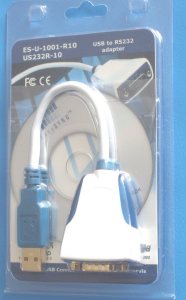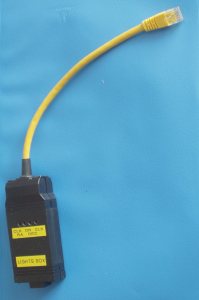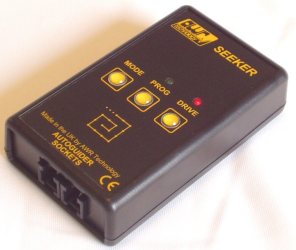
|
Fixing Intelligent Drive System Problems |
WRONG DIRECTION - Change the motor direction sense in FACTORY-USTEP-RA-DIR or FACTORY-USTEP-DEC-DIR. Note it is possible to get the DEC wrong frequently if you assemble the telescope onto the mount at each observing session. It is better to mark the orientation so that you only have to figure it out once.
WRONG DISTANCE - The RATIO must be wrong for this axis. The field is entered in FACTORY-USTEP-RA-RATIO or FACTORY-USTEP-DEC-RATIO. The distance moved should be exactly mirrored by the coordinate change on the IH display. If it is a fixed percentage out then the RATIO is out by the same percentage. You need to do this measurment accurately, preferably with known stars over 60 degrees apart and using a cross hair eyepiece (12mm focal length). Before doing this adjustment you need to be polar aligned as best you can by the DRIFT METHOD. The AWR two star cal method and GOTO's will not work until the RATIO's are correct. This is most likely to be a problem with FRICTION DRIVES only, as worm drives can be precisely calculated.
If the Intelligent Handset is set to KING rate and the RA motor is turning too slowly then it needs to speed up. This means there will be MORE encoder counts for a circle. So the RATIO figure (which is the number of encoder counts in a circle) needs to be BIGGER. This number can be changed without any problems. All speed rates for this axis are re-calculated using the new RATIO.
The CORRECT SITUATION is that the UP button should move the telescope towards the POLE and the DEC coordinate display should go more positive. The RIGHT button should move the telescope towards the WEST and the RA coordinate should decrease. The OPPOSITE direction buttons should have the opposite effects. Also the amount of movement displayed should be the amount the scope physically moves.
During SETUP of the Intelligent Handset it is possible to get the numbers in the various configuration fields wrong in which case the coordinates appear not to change or go in the wrong direction when direction keys are pressed. The Lights Box can indicate the information flow is correct. When the buttons are used, the direction line and clock pulses should change. The direction line is acting as a count direction (up or count down) on the internal registers kept of the telescope position.
DIAGNOSTICS - If the coordinates displayed on the handset always move in one direction no matter which button you press (UP and then DOWN but the coordinate value always decreases) then the LIGHTS BOX can tell you if the DIRECTION line from the drive box is acting as it should. If it is solidly stuck as ON or OFF when you press either button then there could be a fault in the drivebox or the lead between the drive box and the lights box.
The Intelligent Drive System uses SERIAL RS323 data flow between IH and PC, IH and DRIVEBOX. Constrictions on connector arrangements make special leads a necessity. Both serial ports work at the same protocol (9600,N,8,1) and in addition the IH-PC requires Hardware handshakes using RTS, CTS lines. A very useful gadget is the RS232 SERIAL PORT MONITOR which is self powered and has lights for each of the lines and 9 pin D connectors of the right polarity. We sell these useful devices. So when data flows the lamp flicks colour.
Problems which can be narrowed down are:
PROBLEMS with LAPTOPS: |
 |
| TECHNICAL BITS | ||
|---|---|---|
|
GETTING COMMUNICATION: A common problem in setups is to get serial communications between devices. Here is a checklist and a suggested procedure to find out which bit is not working.
Many serial comms use initial settings which must be the same both ends. These will commonly be quoted as "9600,N,8,1" In order these are baud rate (bit speed), parity, number of bits in each data word, number of stop bits. Speeds can be very slow (110) to very fast (38400) bits per second. There can be 10 or more bits in a character so rule of thumb is to divide the baud rate by 10 to get the characters per second. (This holds for modems over telephone wires as well). Parity can be None, Odd, Even, Mark or Space and is a type of checksum. Number of stop bits is the minimum amount of idle required between characters.
2. Handshaking.
3. The cable. A common problem is getting the wrong cable. There are two sorts, one with cross-over connections and the other is a plain extender lead. Unfortunately you can buy both sorts with either two male ends, two female ends or a mix. The correct lead for the Intelligent Handset is a NULL-MODEM also called LAPLINK or PC LINK cable which is intended to connect two computers together via their serial ports.
4. Diagnosis.
5. The protocol. 6. The method. To see if characters are coming out and travelling a long a cable all we need to do is listen at the other end with our PC for the first few characters - the start of the first message. If you are in luck the data flow may be recognisable and may convey useful information. Start by setting up the communications parameters to match that of the transmitter. Run the terminal programme and see what happens. This will also work if you want to see if your terminal programme is sending characters - use another computer at the other end with its own terminal programme. The computers do not have to be PC's. Any computer with an external serial interface can be pressed into service If there is nothing at all then check - there may be hardware handshakes required. Don't give up. Ther can be broken or shorted wires in the cable. At this point you reach for a multimeter and 1) check for continuity between both ends of the cable 2) check for voltage levels. Rx and Tx idle at 0 to -12 volts. When characters are being sent the voltage will flash up to positive values. RTS and CTS are allowing data flow when they are up at +5V to +12V. Voltage indications can be shown by LED's (usually bi-colour) and a reasonably low cost 'lights box' can be purchased which will diagnose all the commonly used wires in one go. |
BUILT IN DIAGNOSTICS
Setting the COMMS mode in the IH to DEBUG allows you to see the data flow between the Drivebox and Handset. Use a serial terminal in a computer to show this. A certain amount of strings used in development of the overall software will also be shown but the basic communication structure is understandable. You need the IH-PC SERIAL lead for this diagnostics.
|
You can also connect a DRIVE-PC SERIAL lead straight into the drivebox where the Intelligent Handset would normally plug in. This gives you direct control of the drivebox programmable registers and functions as described in the DRIVEBOX PROTOCOL DOCUMENT. The RS232 SPM can be used on this cable at the PC end to see these signals. You can also connect in the LIGHTS BOX to see the encoder information flow.
With all these tools it is possible to locate the source of non-working Intelligent Drive Systems. The full list of diagnostic equipment we sell is: SERIAL/IH PC to IH (9 pin 'D' to 6 pin RJ12) converter lead (2 mtr) SERIAL/DR PC to Drivebox serial lead converter 2 metre USB/RS232 USB serial converter. The AWR recommended one LIGHTS Lights Box to show VIRTUAL ENCODER information flow RS232 SPM Serial Port Monitor 9 pin D leads |
 |
Firstly, a method of detecting and measuring wobble is to take a photograph at prime focus of the telescope when there is a small DEC drift. The exposure should be about 10 minutes and the DEC drift should be about 10 to 20 arc minutes over this time. With the Intelligent Handset it is possible to put it into TRACK mode with a DEC drift parameter settable by the user. Make this 1 or 2 arc second per second and then you will have the correct size of DEC drift. Alternatively if you mis-align the pole you will get DEC drift. You will have to measure the photograph, or digitise it and send it to me along with some information - focal plane scale (or focal length), duration of exposure and the DEC track rate.
|
An alternative method for measuring all sorts of drive errors is to use the AWR SEEKER.
CCD cameras can also help in gathering data. Using ASTROART it is possible to get a readout of the error every 0.5 second and so it is easy to build up an array of data covering at least two cycles of the longest component (the worm revoltuion period). Then the data can be analysed in a programme like DPLOT to get the RMS error and all the periods using FFT analysis. This is a very powerful technique which uses all the data to dig out any signals from the noise. Actual example of periodic error with FFT ANALYSIS and further discussion. |
 |
 |
This shows the jumper (JP1) setting to OPEN. The default guide speed will be set to the CENTRE rate. CENTRE = 2.5x sidereal (default)
Changing the link to cover both pins changes (See also AUTOGUIDING page) |
|---|
If the SIMPLE HANDSET is being used then the jumper (JP1) must be set to OPEN else all the speed settings will not be available.
Early versions of the MICROSTEP DRIVEBOX did not have a jumper on the pcb and so the default speed from the simple or the CCD connector is the IH CENTRE rate. So to avoid any jumps with autoguider use, lower this setting to about 1.70 from the default of 2.50
© 2005-8 AWR Technology